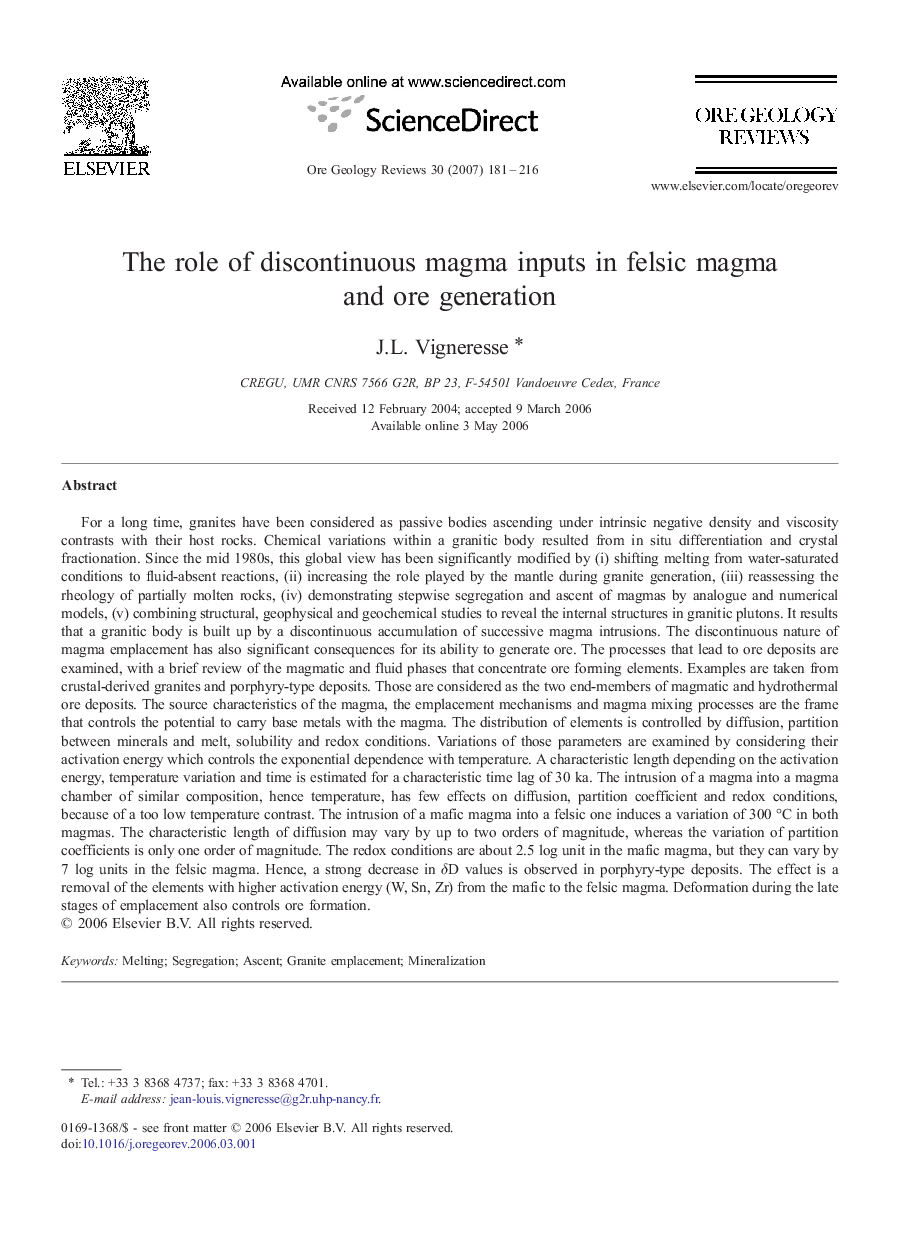| کد مقاله | کد نشریه | سال انتشار | مقاله انگلیسی | نسخه تمام متن |
|---|---|---|---|---|
| 4698138 | 1637271 | 2007 | 36 صفحه PDF | دانلود رایگان |

For a long time, granites have been considered as passive bodies ascending under intrinsic negative density and viscosity contrasts with their host rocks. Chemical variations within a granitic body resulted from in situ differentiation and crystal fractionation. Since the mid 1980s, this global view has been significantly modified by (i) shifting melting from water-saturated conditions to fluid-absent reactions, (ii) increasing the role played by the mantle during granite generation, (iii) reassessing the rheology of partially molten rocks, (iv) demonstrating stepwise segregation and ascent of magmas by analogue and numerical models, (v) combining structural, geophysical and geochemical studies to reveal the internal structures in granitic plutons. It results that a granitic body is built up by a discontinuous accumulation of successive magma intrusions. The discontinuous nature of magma emplacement has also significant consequences for its ability to generate ore. The processes that lead to ore deposits are examined, with a brief review of the magmatic and fluid phases that concentrate ore forming elements. Examples are taken from crustal-derived granites and porphyry-type deposits. Those are considered as the two end-members of magmatic and hydrothermal ore deposits. The source characteristics of the magma, the emplacement mechanisms and magma mixing processes are the frame that controls the potential to carry base metals with the magma. The distribution of elements is controlled by diffusion, partition between minerals and melt, solubility and redox conditions. Variations of those parameters are examined by considering their activation energy which controls the exponential dependence with temperature. A characteristic length depending on the activation energy, temperature variation and time is estimated for a characteristic time lag of 30 ka. The intrusion of a magma into a magma chamber of similar composition, hence temperature, has few effects on diffusion, partition coefficient and redox conditions, because of a too low temperature contrast. The intrusion of a mafic magma into a felsic one induces a variation of 300 °C in both magmas. The characteristic length of diffusion may vary by up to two orders of magnitude, whereas the variation of partition coefficients is only one order of magnitude. The redox conditions are about 2.5 log unit in the mafic magma, but they can vary by 7 log units in the felsic magma. Hence, a strong decrease in δD values is observed in porphyry-type deposits. The effect is a removal of the elements with higher activation energy (W, Sn, Zr) from the mafic to the felsic magma. Deformation during the late stages of emplacement also controls ore formation.
Journal: Ore Geology Reviews - Volume 30, Issues 3–4, March 2007, Pages 181–216